
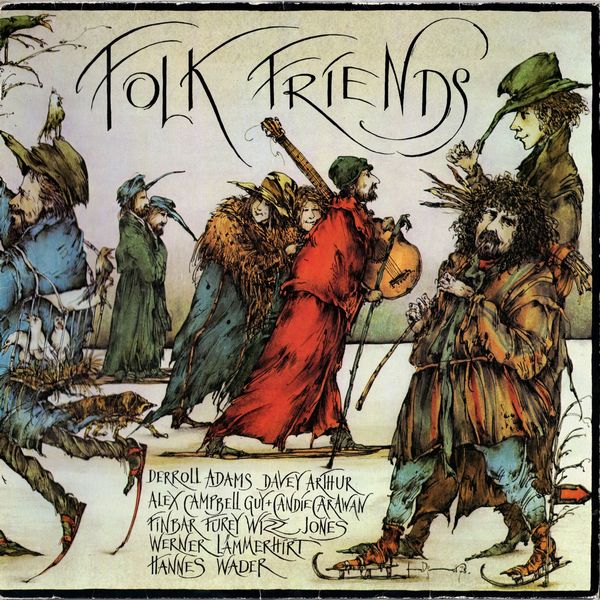 |
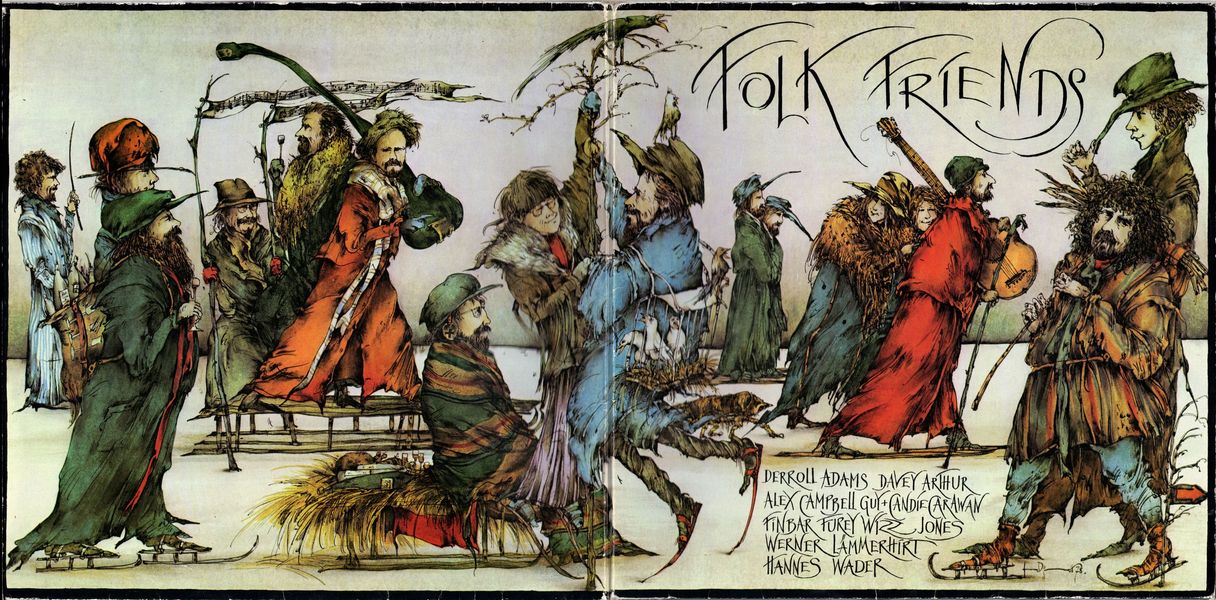
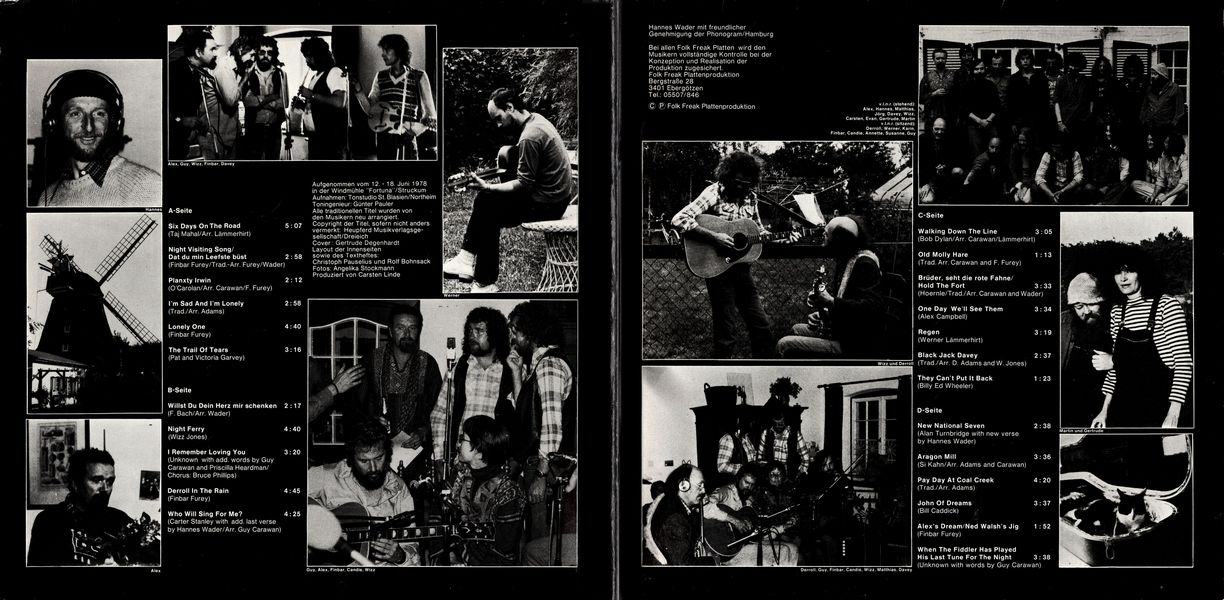
|
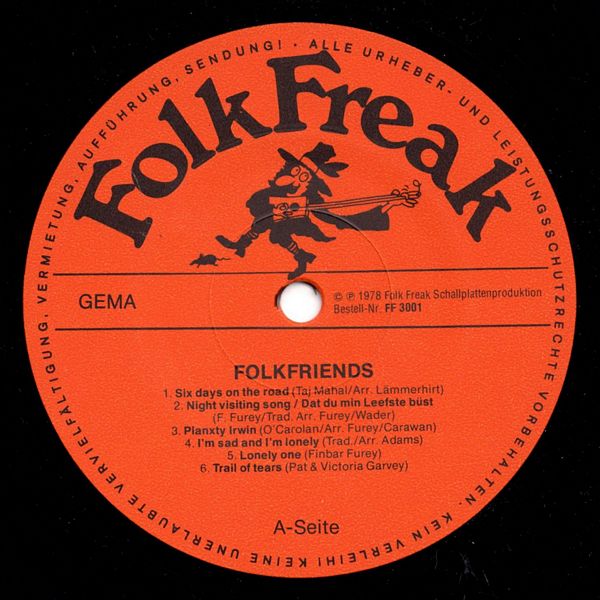
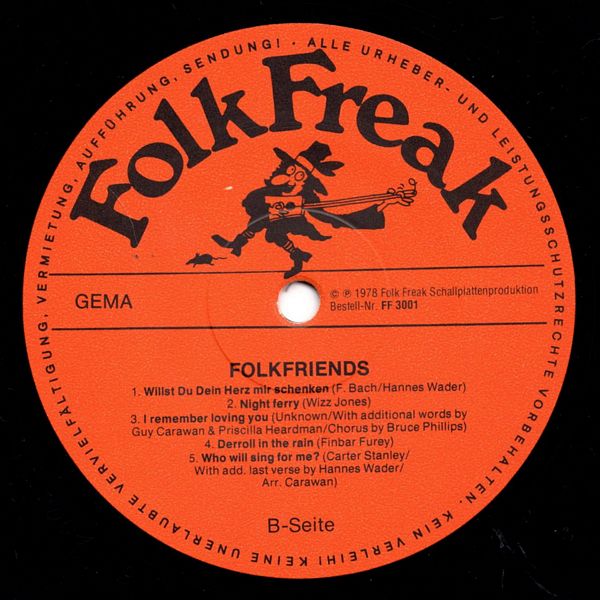
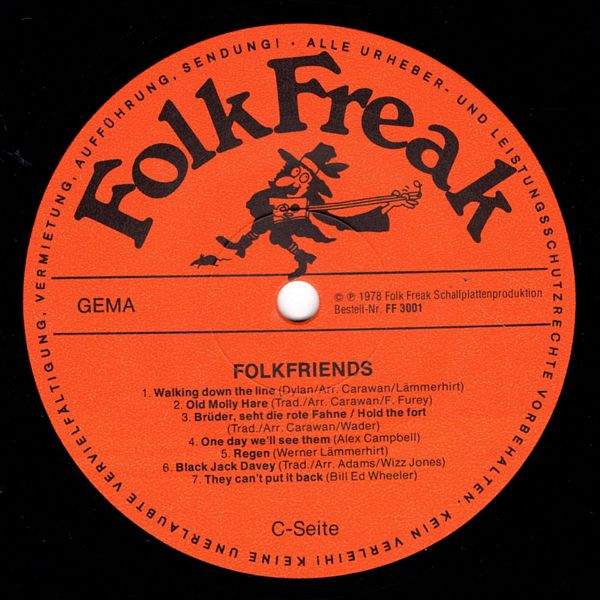
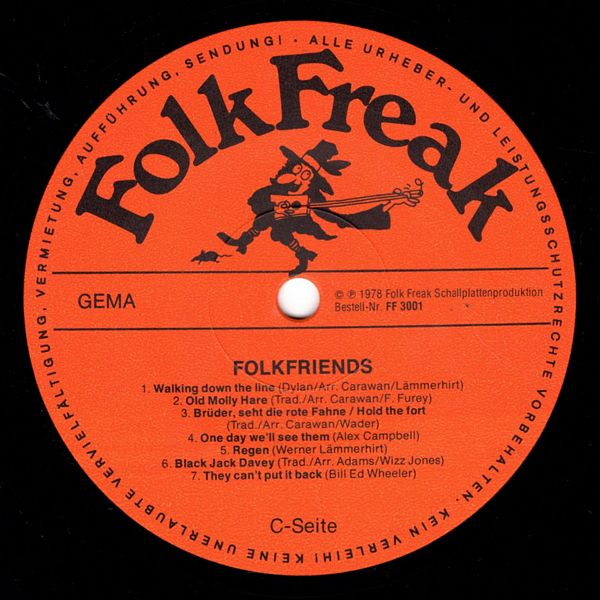
|
| more images |
Sleeve Notes
The recordings for the album "Folkfriends" were recorded between June 12th and 18th, 1978 in the windmill "Fortuna" in Struckum near Husum/North Friesland. The windmill is the residence of the songwriter and folk singer Hannes Wader, who made his living room available as a recording room at the time.
Singers, guitarists, banjo, mandolin, fiddle, bagpipe and dulcimer players from several European countries and the USA, who have been friends with Hannes and each other for many years, met in Flanne's windmill.
From the American South, Guy and Candie Carawan had come with oppressed minority songs, timeless new songs and the hammered dulcimer. Guy and Hannes met for the first time ten years ago at the festival in Waldeck Castle and since then they have always met when Guy was on tour through Germany.
The American banjo player Derroll Adams traveled from Belgium. He knew Guy from the US in the 1950s before he emigrated to Europe himself. In the years that followed, Derroll had an inestimable influence on the development of the folk scene in France and England, especially as a street musician and through guest performances in clubs.
His friend Alex Campbell from Glasgow — who also lived in Paris as a street musician in the early 1960s and is now a role model for many young folk singers in various Western European countries — was now in the windmill, as was Wizz Jones, guitarist and singer-songwriter from London, who has since earned his living as a professional folksinger for around 20 years.
Finbar Furey came from southern Ireland and, as a bagpipe player, did much for the recent development of Irish folk music. He had brought his many flutes, new songs of his own and his friend Davey Arthur, with whom he plays in the group The Fureys and Davey Arthur.
Werner Lämmerhirt, the well-known folk guitarist, was also there. He had toured with Hannes between 1971 and 1973 and appeared on records by Alex Campbell, Guy Carawan and Hannes Wader before beginning his own successful career. And finally Hannes Wader, the host himself:
Without his encounter and involvement with Anglo-American folklore, his development into a German folk singer would have been different. His roots in German folk music, which has been fractured on several occasions, and his musical skills allow him to work in common with all these musicians who grew up in traditional, living folk music cultures. Jörg Suckow and Matthias Raue also played cello and fiddle and sang in the choir.
Martin and Gertrude Degenhardt, since the first Waldeck Festivals associated with the folk scene in Germany were present at the Mühle throughout the recording period. They observed and sketched the musicians: The album sleeve is the result of their impressions.
Günter Pauler, who recorded the music and kept it up day and night with concentration and good humor, used a Nagra IV S and a TEAC 80-8 eight-track machine with dbx and Sennheiser and AKG microphones. Mixing was done on a Nagra IV S.
Hannes, Guy, Derroll, Alex, Wizz, Finbar, Davey and Werner had met rather by chance in recent years when their paths crossed on tours or at festivals. Sometimes, on the sidelines or backstage, they would unpack their instruments and play songs and tunes they liked. From time to time they also played together in sessions and noticed that they got along well not only musically but also personally.
Because they had become friends, they had now — regardless of their "market value" or exclusive ties to agencies and record companies — met at the mill and started making music together. Much of that friendly, laid-back vibe echoes in the music and songs on this album. The enthusiasm to sing and play together in different groups and to be able to try out new musical possibilities can be heard atmospherically and as a feeling in every track on this album. All songs and instrumentals are disc premieres in the changing combinations of the "Folkfriends".
The musicians and singers involved chose the titles they wanted to record themselves in consultation with one another. They arranged their music and songs together. Without any pressure to record their music as a usable product in a certain time, they held their sessions in the garden and in the large room of the mill right in front of the microphones.
A living room — even if it's surrounded by the 'solitude' of rural life — is not a soundproof recording studio with noise-absorbing flooring and the threatening red light of 'Recording!' The farmers' tractors drove past Hannes Mühle, and the neighborhood dogs fought in front of her. Occasionally these noises penetrated through the closed doors and windows and could then be heard on the tape. We deliberately understood this atmospheric noise as secondary if a recording seemed unrepeatable and unique in its feel (e.g. with Derroll's "Pay Day At Coal Creek").
It was not intended to make recordings as they are possible 'clean' in expensive recording studios — albeit in a sterile environment, mostly in forced isolation of the musicians and only with the help of playback methods. These recordings are true "live" recordings.
They were created in the joint work of all those involved, with the exception of a few recordings without playback. Because musicians are people whose feet tap along to the rhythm of their music, whose fingers sweat and then produce overtones when running fast on the guitar strings and because their breath can be heard blowing flutes and flutes, we deliberately recorded these noises. We have not attempted to suppress them through technical means, as is usually done.
Musicians are not machines whose products can be seen in a predetermined, perfectly controllable end result, but sensitive people who express their sensations and feelings as essential creative moments in their songs and melodies. Seen in this way, the recordings of the "Folkfriends" reflect a relaxed, human atmosphere with the exclusion of technical refinements. Seen in this way, folk music is direct and simple and, by doing without too much technology, is understandable for everyone and can be done by everyone.
Carsten Linde
Original German translated via Google Translate.